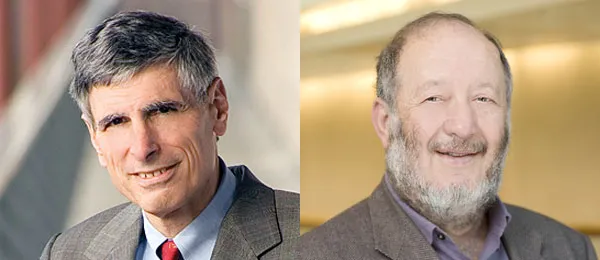
Stanford Report - March 11th, 2009 - by Krista Conger
With a stroke of his pen, President Barack Obama on March 9 turned the world of stem cell research on its head—again. But this time, scientists are celebrating. Eight years ago, then-President George W. Bush severely restricted federal funding for human embryonic stem cell research. Progress since that time into what many believe is the most promising avenue for cures or therapies for many life-threatening disorders has been limited.
"It's been a long winter," said Renee Reijo Pera, PhD, of the funding restrictions. "It was so inspirational to watch and celebrate with advocates, patients, physicians and research scientists. We've been hoping for this day for years."
Federal funding for research on cell lines that had been off-limits during the Bush administration, coupled with billions of dollars in federal stimulus money, could set the stage for a surge of support for stem cell research well into the next decade, if things move quickly.
Reijo Pera directs Stanford's Human Embryonic Stem Cell Research and Education Center. She and fellow Stanford scientist Irving Weissman, MD, director of Stanford's Stem Cell Biology and Regenerative Medicine Institute, attended the ceremony.
Along with lifting Bush's policy, Obama pledged to "restore scientific integrity to government decision-making to ensure that ... we base our public policies on the soundest science" and "that we appoint scientific advisors based on their credentials and experience, not their politics or ideology."
Weissman applauded the move. "The lifting of the ban, with [Obama's] strong support of a role for science in policymaking, rolls back the insertion of political, religious and moral ideologies that created barriers to biomedical research," he said.
Obama's actions could have an immediate effect on institutions such as Stanford University and the California Institute for Regenerative Medicine. Federal funding for research on cell lines that had been off-limits during the Bush administration, coupled with billions of dollars in federal stimulus money, could set the stage for a surge of support for stem cell research well into the next decade, if things move quickly.
"This action is both welcome and overdue," said Philip Pizzo, MD, dean of the Stanford School of Medicine and a member of CIRM's governing board. "This vote of confidence from President Obama in the promise of embryonic stem cell research validates and extends CIRM's mission to help millions of people suffering from currently incurable medical conditions. It's also a powerful signal that medical research must be pursued in times of economic difficulty and may ease concerns about funding for the institute."
CIRM was established in 2005 after California voters passed Proposition 71. That measure provided it with $3 billion from state bond sales to fund stem cell research over the next 10 years. But lately the institute has been scrambling for funds because the state's fiscal woes have made it difficult to sell its bonds on the public market. At its last meeting, the institute's governing board voted to approve several grants but not to disburse funds until more was known about its funding.
The CIRM board plans to consider its financial options at its March 12 meeting. The discussion will likely include both the Obama action and the recently passed stimulus package, which awarded the National Institutes of Health $10 billion to spend in the next two years. The NIH is expected to fund both previously submitted and new grants that could make progress in the next 24 months.
"Thanks to CIRM, Stanford and other California institutions have a head start in this type of research, and we can therefore take full advantage of the newly available federal funds," said Weissman. "We can lift the bureaucracy that has been established to scrutinize every purchase by every lab, and move forward with this important research."
Obama's action fulfilled his campaign promise to allow federal funds to be used for research on dozens of human embryonic stem cell lines derived after Aug. 9, 2001, when Bush announced the restrictions. Scientists have argued that the 21 cell lines approved by Bush for federal funding were seriously flawed and unfit for use in humans. Since then, more human embryonic cell lines have been derived without the use of federal funds, but researchers have been hindered by their having to use separate, non-federally funded facilities and equipment to do research on those lines.
Obama's order raises some new questions. Scientists had expected his approving federal funds for stem cell lines derived from embryos destined to be discarded at infertility clinics. But the president left open the possibility of funding research on lines derived by other methods. According to a March 10 story in the Washington Post, the NIH has 120 days to decide what kinds of studies will be supported and that is a much bigger task than its officials had anticipated.
CIRM and other California institutions have already developed guidelines to address these questions, and they may be able to offer assistance to the NIH. "We can bring together thought-leaders from the scientific community and the government to craft appropriate policies to regulate human embryonic stem cell research," Weissman said in an interview on March 6 before the president presented and signed the order.
Still, there is no question that the signing was a watershed moment for science. "In these hard economic times, it is wonderful to inject some hope into our researchers, as well as provide them with the stimulus for the work that could grow a new industry and vastly improve medical care," Weissman said.

